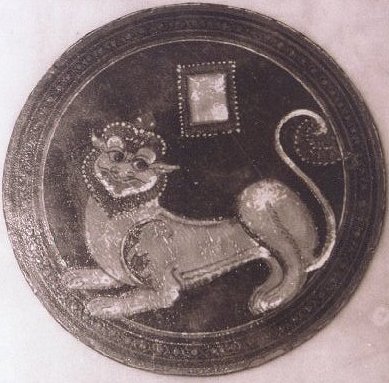The Ganjifa Art
First Online: February 16, 2002
Page Last Updated: December 07, 2024
K.L. Kamat/Kamat's Potpourri
Laxman meets Vali's wife Tara
Mythological Painting on Ganjifa Card
The Ganjifa (a.k.a Ganjipha, Ganjeepha etc.,) cards have a history of more than 300 years. Ganj is a Persian word meaning "treasure", "treasury" or "hoard". Moghul emperor Babur wrote in his memoirs -- "the night we left Agra, Mir Ali the armor was sent to Shah Hasan in Tatta to take him playing cards (ganjifa) he much liked and had asked for." Babur's son Humayun also enjoyed playing these cards which were also very popular in Akbar's time. A pack of ganjifa cards consists of ninety-six cards with eight suits of twelve cards each (comprising the numerals one to ten and two "Court" or trump cards). They are generally circular and made of ivory, tortoise shell, thin wood or hard board material. Dancing, hunting, worshipping, playing chaupar (board game used for gambling) and processions are some of the subjects painted on the cards.
K.L. Kamat/Kamat's Potpourri
Painting of a Lion on a Ganjifa Card
Jaganmohal Palace Museum, Mysore
See Also:
- See more pictures of Ganjifa Art
- See more pieces from the Jayachamarajendra Art Gallery in Mysore
- When the Mogus Ruled. . -- Chronology of the Mogul dynasty, including important kings, the span of their kingdoms, and period artifacts. Includes references and links.

